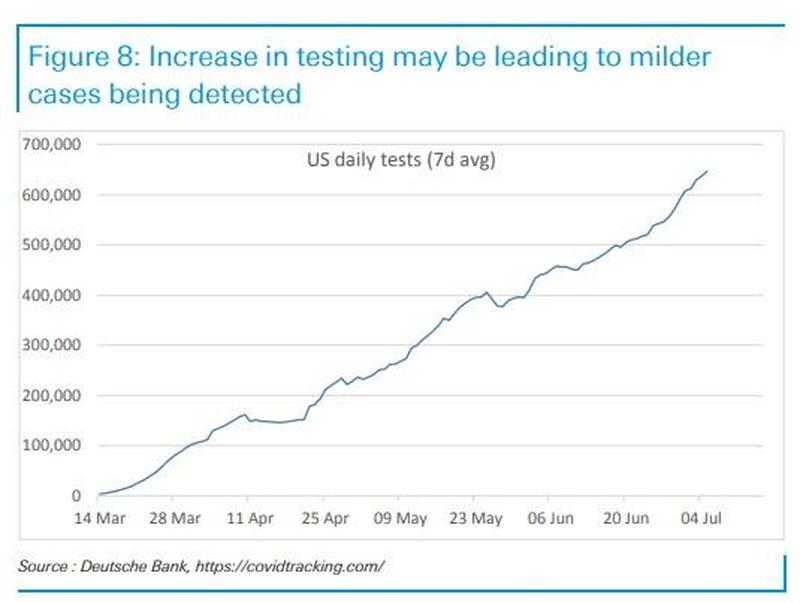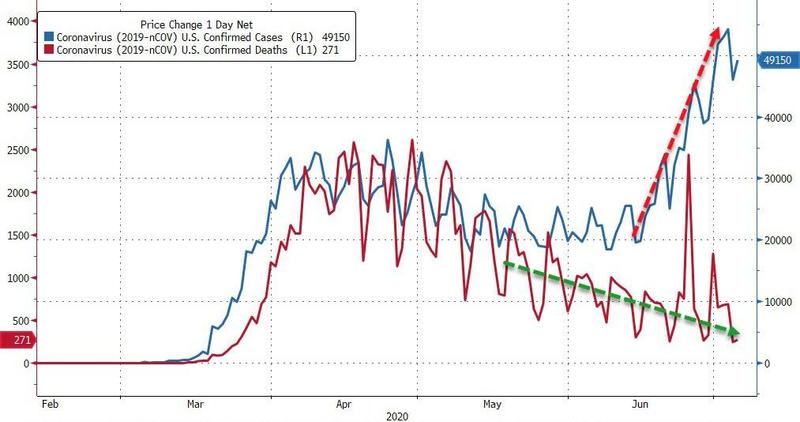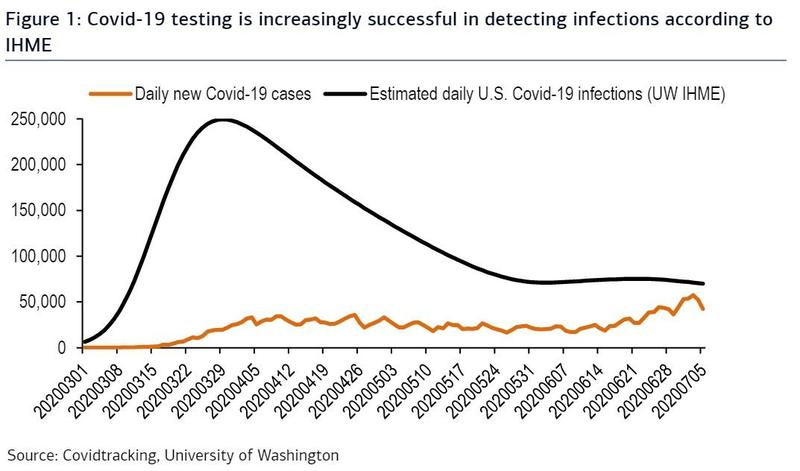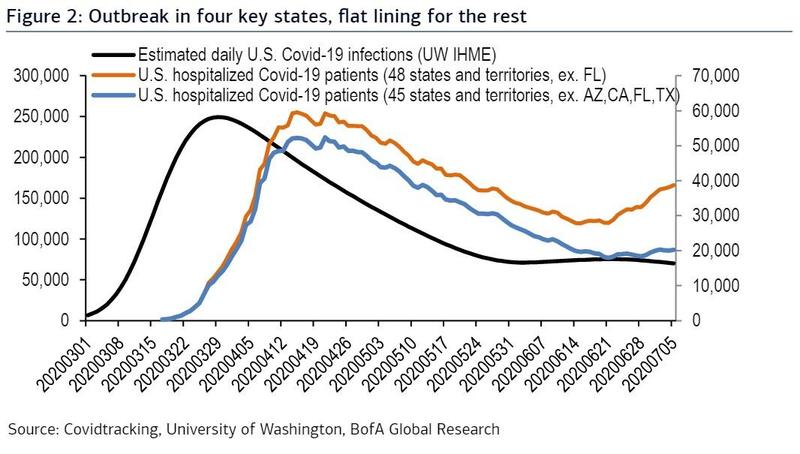Several months ago, the coronavirus pandemic mutated from a purely epidemiological phenomenon and became a full-blown political issue, with clear ideological divisions forming along the lines of whether or not to pursue strict shutdowns (and in some cases, whether to engage in another round of economic closures) all the way down to whether masks should be worn. The drivers here were self-evident: opponents of Trump and the current administration demanded even more caution, in some cases arguably in pursuit self-serving hopes of further economic pain (and more stimulus payments) that would make a Trump re-election difficult; in light of this it is understandable why the president hoped to put the pandemic in the rearview mirror and to accelerate the reopening of the economy which has cost tens of millions in jobs and trillions in new debt.
In recent weeks, a similar divide has also emerged on Wall Street, where bears such as Goldman have been emphasizing the recent surge in new cases across sunbelt states, warning that these would result in another spike in deaths, as well as reduction in mobility and overall cosumption and thus a fresh hit to the economy, as a new round of shutdowns – either mandatory or voluntary – were enacted. Bulls, meanwhile, would note that higher cases are merely a function of widespread testing…
… and point to the continued decline in covid-linked deaths which despite the jump in new cases, have failed to inflect higher, and underscoring that the mortality rate appears to be much lower for younger covid patients.
In a note that appears to be firmly in the bullish camp, overnight BofA’s Hans Mikkelsen writes that sharply elevated new daily Covid-19 case numbers highlight first and foremost more successful testing strategies (more tests, contact tracing, etc.,), according to the University of Washington IHME model.
BofA also notes that are active virus outbreaks in four major states – AZ, CA, FL and TX. However, instead of merely looking at new cases, Mikkelsen says that “to gauge the spread of Covid-19 we prefer to look at number of hospitalized people that, although a bit lagged (in March/April the peak in number of hospitalized came 17 days after the peak in newly infected, according to the IHME model), is less dependent on testing strategy.”
While clearly hospitalizations are up sharply in the U.S., BofA points out that if one excludes the four states “we find they are more accurately described as flat lining.”
Moreover, BofA calculates that in the new outbreak the daily number of infected people peaked on June 21st at 75,179, up from 71,112 on June 1st, and sharply above yesterday’s 69,987 estimate, again according to the IHME model.
The optimistic conclusion: “Should hospitalizations again be lagged 17 days that would imply (local) peak hospitalizations on July 8.” Or, in other words, today.
For the sake of the US economy, political and ideological considerations aside, one can only hope that BofA is right.




No comments:
Post a Comment
Note: Only a member of this blog may post a comment.